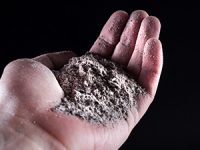How Does Sand Get Under Carpet?
People who replace carpeting or carpet padding are usually surprised to see a thick layer of what looks like playground sand underneath the carpet. A bit of sand is inevitable, but too much of it can cause premature carpet wear. How does this happen? Is there any way to minimize the problem?
Let’s Dig Into This Sand Problem
The layer of loose granular material under your carpeting is not quite the same as sand on a beach, in the desert, or in a playground sand box. All kinds of additional components can be found in the dusty stuff under carpeting, including the following:
- Airborne dust particles(road dust, pollen, pollution, etc.) can come in through open windows. Carpeting acts like a filter, trapping the particles, which eventually accumulate and settle.
- Pet and human hair and dander, composed of skin flakes, gets trapped in carpet fibers.
- Insectsusually do not live in carpeting. They can get trapped in carpeting or die and fall down to the floor.
- Microscopic organismscan actually live and die on almost any surface, including carpeting.
- Carpet adhesive, over the course of time and in certain conditions, can become very hard and brittle. Foot traffic breaks up and dislodges little bits of this material.
- Textile fibersfrom paper products, clothing, draperies, upholstered furniture, and carpet pile can settle in and under carpeting.
Without proper carpet care, all these components settle down to the lowest level in and, eventually, under carpeting.
Are Hard Floors Better?
One might imagine that the sand problem can be resolved by getting rid of carpeting altogether and installing a hard surface, but there are other factors to consider.
If sand remains on a hard surface, it will be unpleasant underfoot, give the floor a dirty appearance, and eventually result in dullness and scratches. If sand remains in carpeting, it will result in premature wear of carpet fibers. People tend to notice sand on a hard surface whereas carpeting disguises the problem. Either way, the sand problem must be addressed.
Hard flooring must be swept and mopped often and periodically professionally cleaned.
Carpeting must be vacuumed often and periodically professionally cleaned. Carpeting, unlike hard flooring, dampens sound, feels soft underfoot, creates a cozy, welcoming atmosphere, and can improve indoor air quality. Dr. Michael Berry, an environment and public health educator, writer, and science advisor, noted in the Journal of Cleaning, Restoration and Inspection that “six different field demonstration studies over the past twenty-five years indicate that a properly designed and scheduled carpet cleaning program that emphasizes extraction” will ultimately improve indoor air quality.
Tips to Avoid and Remove Excess Sand
At home, remove shoes, if possible, before entering. For residences where shoe removal is not preferred and for commercial properties, place high quality mats at entrances. Excess sand and grit will be deposited on the mats instead of your carpeting.
Vacuum upholstery and carpeting often, and if possible, use a rotating brush. The bristles help dislodge embedded particles from textile fibers.
Avoid using DIY carpet cleaning machines. The wrong type or the wrong amount of cleaning solutions can result in residue on carpet fibers that will act like a dirt magnet. Improper cleaning methods can drive sand further down into the carpet pile and backing.
Have your carpets professionally cleaned every six month to a year, adjusting the frequency according to the amount of traffic in and out of your home or business. Professional technicians use powerful and effective cleaning equipment and methods to remove sand from carpeting and achieve the best possible results.
This article is one of a series of articles written and published on behalf of Surface Care PRO Partners.

